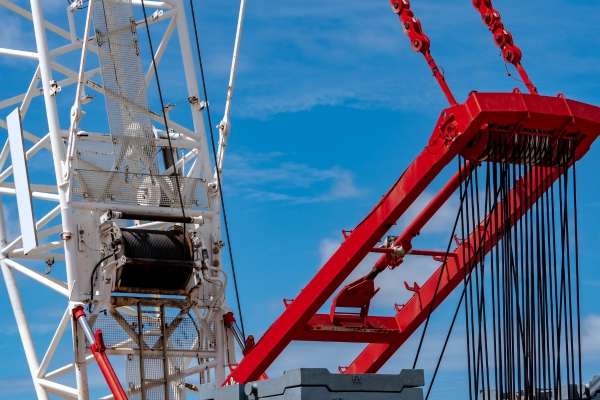100 %

Jun 26,2023
When it comes to lifting and securing heavy loads, the right equipment is essential for safety and efficiency. Two common options are webbing slings and traditional slings. This blog will explore the differences between these two types of lifting equipment. By understanding their unique features and benefits, you can make informed decisions when choosing the most suitable lifting solution for your needs.
Webbing slings are modern lifting tools with flat, flexible webbing material. They are engineered to offer exceptional strength, durability, and flexibility. Here are some key characteristics of webbing slings:
Webbing slings are typically made from high-quality synthetic fibers such as polyester or nylon. These materials provide excellent tensile strength and resistance to abrasion, making them ideal for lifting heavy loads.
The webbing construction of these slings allows for easy handling and maneuverability, even in tight spaces. Their flexible nature ensures a snug fit around the load, enhancing stability and load distribution.
Webbing slings are available in various load capacities, ranging from light to heavy-duty applications. It is crucial to select the appropriate capacity based on the weight and dimensions of the lifted load.
Webbing slings are compatible with different lifting methods, including vertical, choker, and basket hitches. This versatility makes them suitable for various lifting tasks across various industries.
Traditional slings, also known as wire rope slings or chain slings, have been utilized for lifting purposes for many years. These slings offer their own unique set of features and advantages:
Traditional slings typically have wire rope or chain links. Wire rope slings are made of multiple wire strands wrapped around a central core, providing excellent strength and durability. Chain slings, on the other hand, consist of interlinked metal chains.
Traditional slings are renowned for their high load-bearing capacity and durability. They are suitable for heavy-duty lifting applications, particularly in rugged environments where resistance to extreme conditions is crucial.
Wire rope and chain slings offer rigidity and stability, making them ideal for lifting loads with sharp edges or uneven surfaces. Their sturdy construction ensures reliable and secure lifting operations.
Traditional slings can be customized to fit specific lifting requirements. They can be configured with various end fittings and attachments, such as hooks, shackles, or master links, to accommodate different load connections.
Selecting the appropriate lifting equipment depends on several factors, including the nature of the load, working conditions, and safety considerations. Here are some considerations to help you make an informed choice:
Consider the load's weight, shape, and dimensions. Webbing slings are ideal for delicate or fragile loads, while traditional slings excel in heavy-duty applications.
Evaluate the environmental conditions in which the lifting operations will occur. Factors such as temperature, chemicals, or corrosive substances may influence the choice of lifting equipment.
Assess the slings' ease of handling, inspection, and maintenance requirements. Webbing slings are generally lightweight, easy to handle, and moisture-resistant, while traditional slings may require lubrication and periodic inspections.
Ensure the chosen lifting equipment complies with industry safety standards and regulations. Both webbing slings and traditional slings must meet specific criteria for safe lifting operations.
Webbing slings and traditional slings each have their unique features and benefits. Webbing slings offer flexibility, versatility, and superior strength, making them suitable for various lifting tasks. On the other hand, traditional slings provide rigidity, durability, and high load-bearing capacity, making them ideal for heavy-duty applications. By considering the specific lifting requirements, load characteristics, and working conditions, you can choose the most appropriate lifting solution for your needs.
Safety should always be the top priority when engaging in lifting operations. Adhere to industry best practices, conduct proper inspections, and follow manufacturer guidelines to ensure safe and efficient lifting operations.